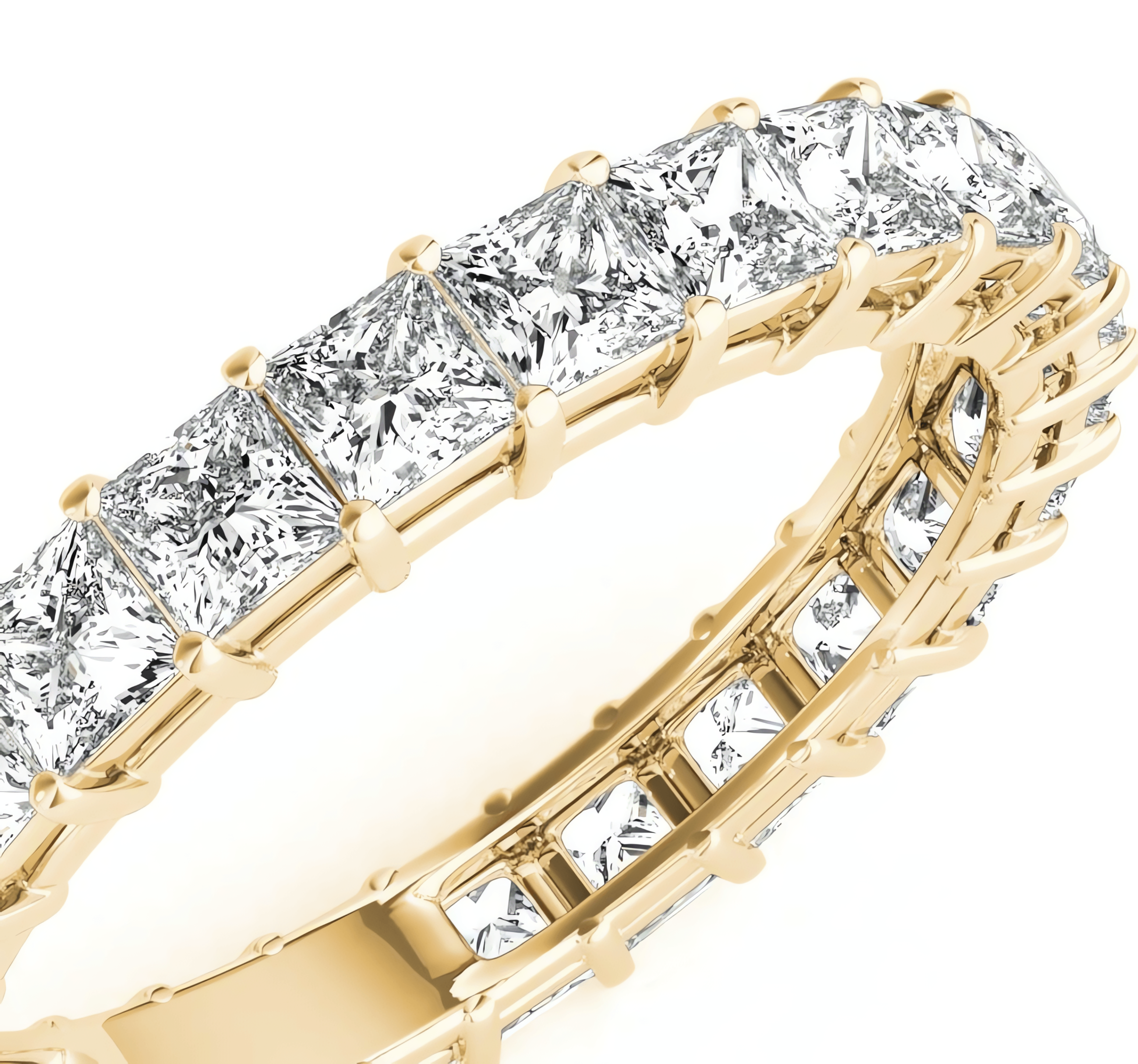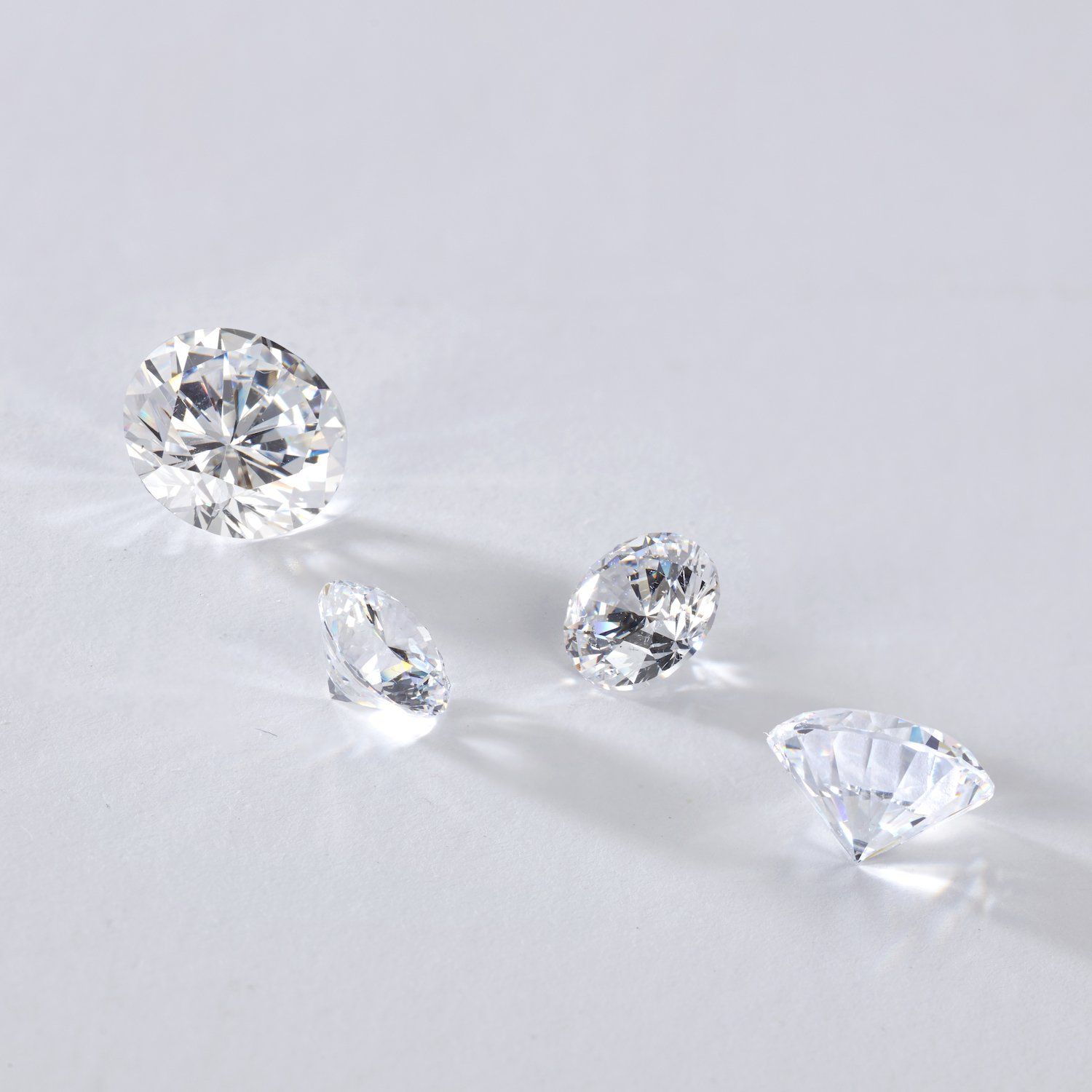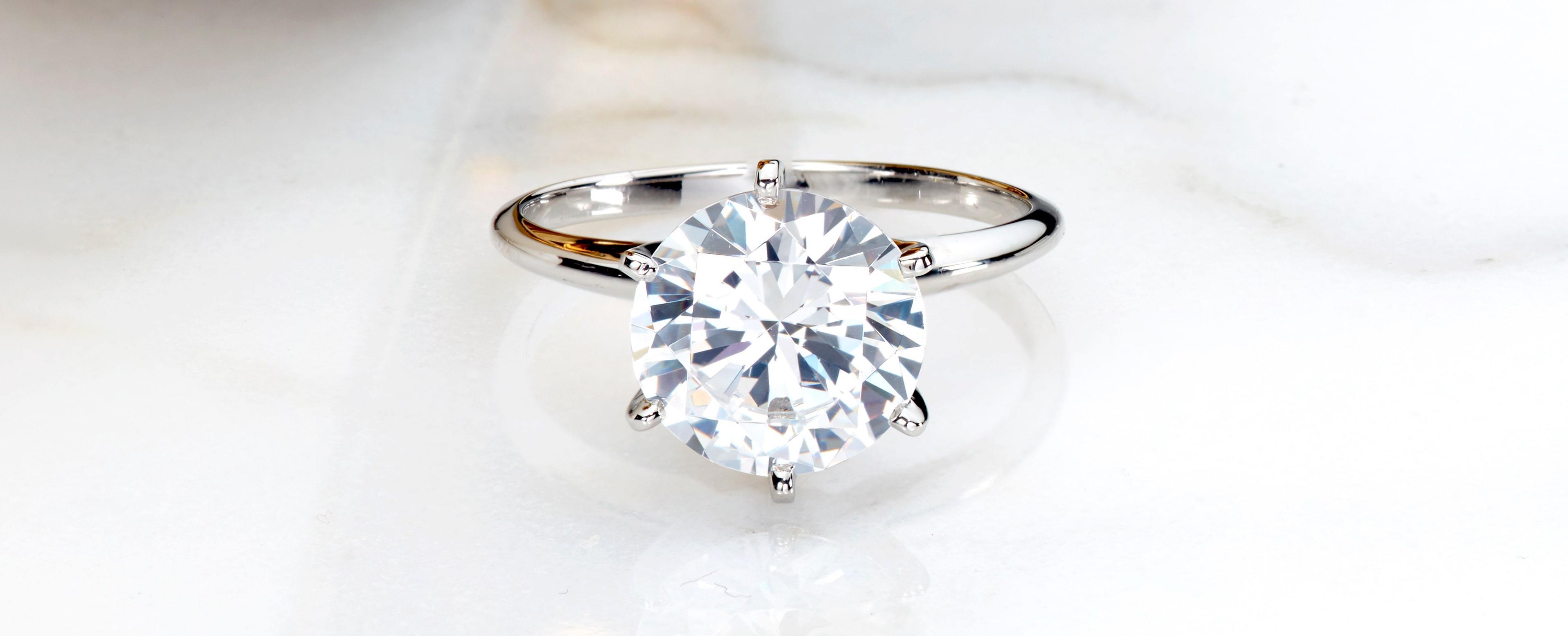What Are Lab-Made Diamonds?

Welcome to the Brilliant World of Lab Made Diamonds
“Diamonds are a girl's best friend,” sang Marilyn Monroe in the iconic film Gentlemen Prefer Blondes, an ode to the most precious gemstone, the diamond.
Diamonds have long been sought-after and ever-popular worldwide, revered as ultra-luxurious and the pinnacle for enviable style and worldly success. Artfully placed into premium metals and set into classic to modern mountings, diamonds sparkle in the light with their distinctive fire, setting them apart from any other stone. Prized fine jewelry, heirlooms, and museum-worthy designs often incorporate diamonds.
But what if you love the look of diamonds but wish to invest in sustainable luxury? Lab-made diamonds provide the ultimate choice for a socially conscious engagement ring. Lab-made diamonds showcase all the dazzling beauty of the natural diamond without the strenuous supply and work chain that often accompanies the earth-mined diamond. Lab-made diamonds are gorgeous, high-quality, and the perfect choice for those who would like to purchase a contemporary, earth-friendly alternative to the natural diamond.
This short blog post will serve as an informational guide on lab-made diamonds, lab-made diamond history, diamond simulants, and natural vs. lab-made diamond properties.
What are Lab-Made Diamonds?
Lab-made diamonds are synthetic diamonds man-made in a controlled environment.
Lab-grown diamonds are commonly marketed under different trade names depending on the retailer, jewelry designer, or manufacturer. Laboratory-made diamonds may be referred to as man-made diamonds, engineered diamonds, cultured diamonds, and lab-made diamonds. They are also known as ethically sourced diamonds, ethical diamonds, conflict-free diamonds, or above-the-ground diamonds.
How are Lab-Made Diamonds Created?
Modern technology has made a dramatic breakthrough with the production of man-made diamonds. This advanced technology imitates the conditions natural diamonds undergo when they form underneath the earth's crust. The laboratory process produces a synthetic counterpart with the same chemical, optical, and physical properties as natural diamonds.
Lab-made diamonds also have the same crystal structure as natural diamonds, carbon with a cubic crystal structure. Lab-grown diamonds are made with carbon and are crystallized in an isotropic 3D form.
Lab Made Diamonds: A History of Design & Creation
According to the GIA, lab-grown diamonds were first developed in the 1950s. Once the process was perfected and ready to be introduced into the market, these lab-made diamonds became available as an alternative to natural diamonds. They soon gained popularity because of their affordability and eco-friendly attributes.
Here is a brief history of lab-grown diamond creation:
1950s: The HPHT method was the first method used to produce synthetic diamonds. The HPHT method imitates the real-life conditions of natural diamond formations in the earth but in a lab. HPHT diamond growth occurs at pressures of 5–6 GP and temperatures of 1300–1600°C.
HPHT Method
Did you know the HPHT process can also be used to improve a natural diamond’s characteristics? Natural diamonds that are highly included or may display undesirable color can be put through the HPHT method, which will improve both their color and clarity. This process will not harm the diamond. It will enhance its attributes and reduce its flaws.
The HPHT method process can also be used to change the color of natural diamonds into rare, fancy color diamonds. Sought-after and prized pink, blue, or yellow fancy diamonds become more attainable to purchase with the HPHT-treated method, producing a variety of these gorgeous colors. These considerably more affordable treated diamonds may be incredibly saturated in color, rich in vibrancy, and eye-catching with mesmerizing hues.
Please note: Improving a diamond’s clarity should always be disclosed. Any diamond treatment will affect the value of the diamond.
1970s: The process was refined when the American company General Electric created the first gem-quality lab-made diamonds. These diamonds were of acceptable quality, clarity, and sizes for jewelry settings.
Mid-1980s: Other manufacturers started producing yellowish to brown lab-made diamonds. The process improved over time reducing color and clarity imperfections, making these lab-grown diamonds suitable for jewelry.
2000s: The chemical vapor deposition (CVD) method was introduced as a way to create lab-made diamonds.
CVD Method
This CVD method is an alternative to the HPHT method and requires lower pressure and temperatures, using temperatures between 700°C to 1300°C.
This modern technique utilizes carbon-infused gas that is pumped into a vacuum chamber. This gas deposits onto a diamond seed, crystallizing it. The size of the lab-grown diamond can be controlled depending on the time allowed for growth. The longer the diamond seed is allowed to crystallize, the larger the size of the stone.
Mid-2010s to Present: Both HPHT and CVD are used for synthetic diamond production. Lab-made diamonds are widely available for purchase, set into endless styles of jewelry designs.
It is important to reiterate that lab-grown diamonds must be of a certain quality before they are deemed worthy of being set into an engagement ring, wedding band, pendant, or other mounting. Lab-made diamonds may be more affordable, but they still exhibit all of the wonders, excitement, and prestige of natural diamonds for you to enjoy and cherish.
Are Lab Made Diamonds the Same as Diamond Simulants?
Diamond simulants and substitutes are meant to take the place of diamonds. However, they do not possess the same chemical or optical properties as natural diamonds. Diamond simulants have different compositions from each other and from natural diamonds.
Lab-grown diamonds are NOT cubic zirconia, moissanite, rhinestone, or “crystals.” These are common diamond simulants used in both fashion and fine jewelry. Strontium titanate, YAG (yttrium aluminum garnet), GGG (Gadolinium gallium garnet) are diamond simulants that may appear less frequently. Man-made faceted glass is also used in budget-friendly fashion designs to hold the place of a diamond.
Natural stones may also take the place of natural diamonds as a substitute. These stones often include colorless sapphire, colorless rock crystal quartz, and colorless beryl. Although beautiful in their own right, they simply do not resemble a diamond, do not offer the same sparkle and fire as the diamond, and are very recognizable to the eye.
Lab-made diamonds offer all the unparalleled qualities of the natural diamond.
Natural vs. Lab Made Diamonds
Diamonds are famous for their hardness, rating 10 on the Mohs hardness scale. The Mohs scale was developed to evaluate the scratch-resistant properties of minerals, with a scale ranging from 1-10. Talc is the softest on the Mohs scale and rates 1. Lab-made diamonds possess the same hardness as the natural diamond, a 10. This makes them durable and ideally suited for daily wear.
Both natural and synthetic diamonds display scintillation or sparkle during movement. These flashes of light disperse across the surface of the stone and its facets. This breathtaking scintillation makes diamonds unique and glamorous.
Both natural and synthetic diamonds display fire or the spectacular burst of colors reflecting through the facets.
Both natural and synthetic diamonds display brilliance or when white light reflects from both the interior and exterior of the stone back to the eyes.
Both natural and lab-made diamonds are evaluated using the diamond grading scale developed by GIA known as the 4Cs. This includes color, cut, clarity, and caratage.
Both natural and lab-made diamonds can be cut and faceted into an endless array of shapes and sizes. Purchasing a lab-made diamond doesn’t mean fewer choices! Find the engagement ring of your dreams without compromising with a lab-grown diamond engagement ring.
Both natural diamonds and lab-grown diamonds have resale value. Although a lab-grown diamond will not be priced as high as its natural counterpart when they possess the same quality factors, there is still a resale market for lab-grown diamonds.
There has been a dramatic increase in the demand for lab-grown diamonds in the jewelry industry. There has been an uptick in popularity for ethically made products designed with fine craftsmanship and innovation. Lab-made diamonds are a sophisticated way to showcase your chosen bridal ring set with an elegant, bold statement that really says something personal about you.
Lab-made diamonds are not “fake” or a lower-quality alternative to natural diamonds. They are a prestigious, socially aware, and ethical selection for a fine jewelry purchase. Lab-grown diamonds are the perfect solution for those who wish to purchase a dream design that is budget-friendly and responsible.


